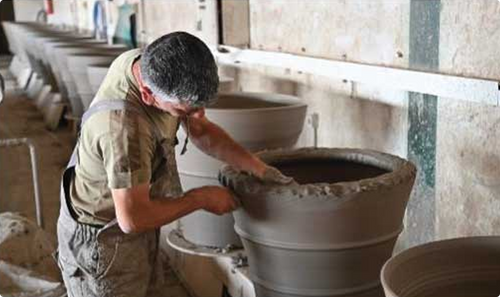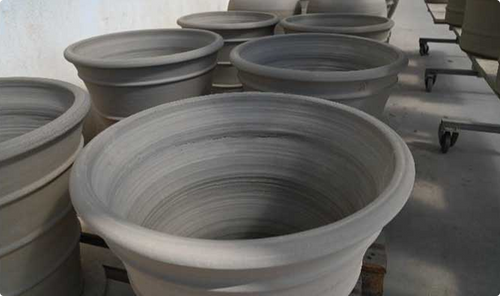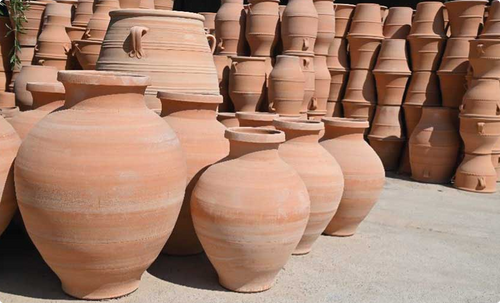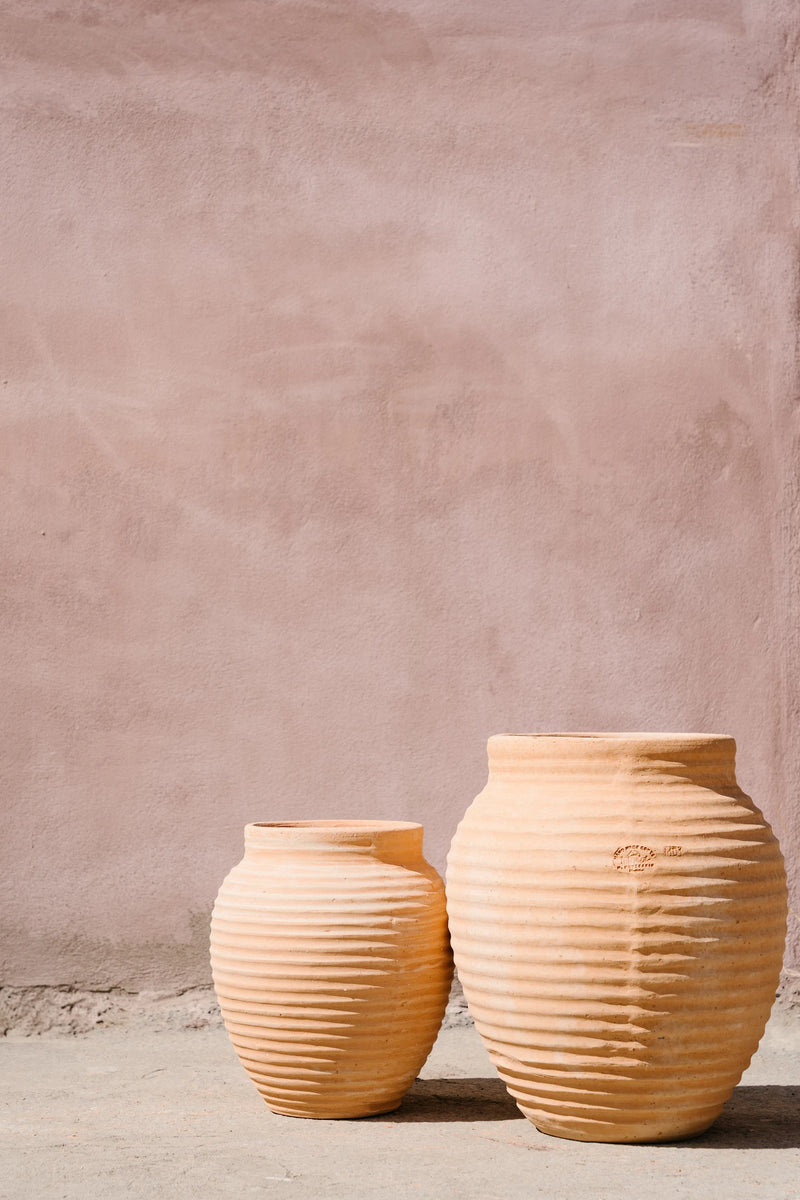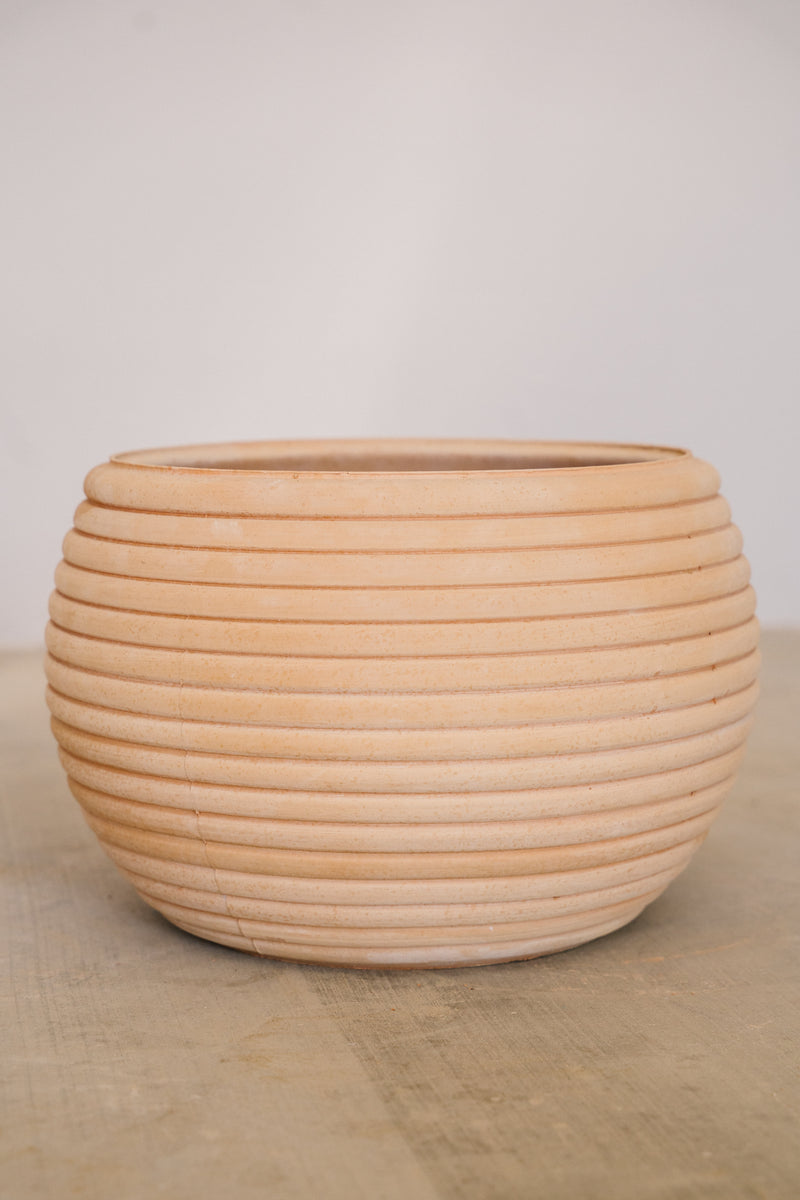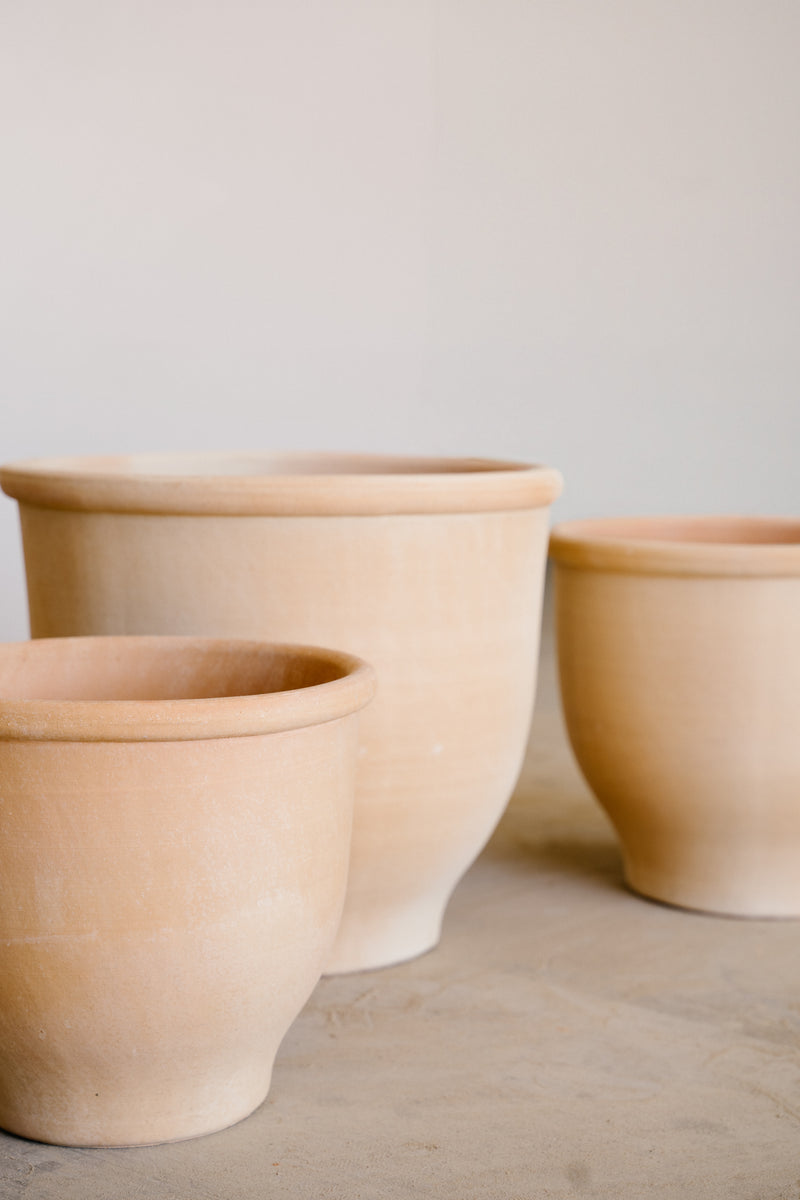
- Artisans source high-quality, natural clay from the local Cretan soil, which is rich in minerals and ideal for pottery. This is sourced nearby to Thrapsano.
- The clay is cleaned and prepared to remove impurities, then mixed with water to achieve the desired consistency.

- Hand-Throwing or Coil-Building: Skilled potters use a potter’s wheel or hand-building techniques (such as coiling) to shape the pot. The size and style of the pot depend on its intended use (e.g. planters, jars, or decorative pieces).
- The artisan uses traditional tools to refine the shape and add details, ensuring symmetry and balance.
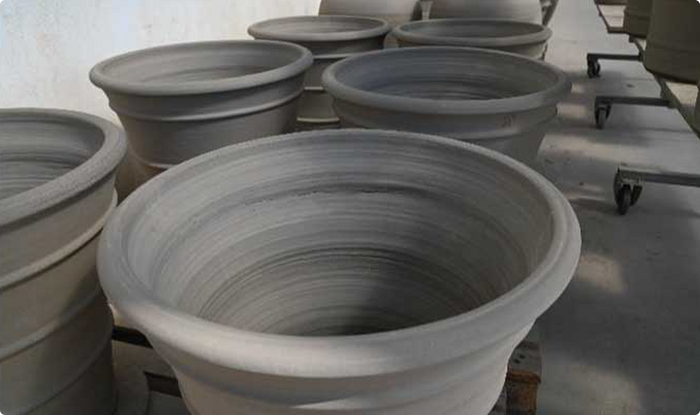
- The freshly shaped pot is left to dry slowly in a shaded, well-ventilated area for several days. This gradual drying prevents cracking or warping.
- Once the pot has dried to a leather-hard state, artisans may carve intricate designs or apply additional decorative elements.

- The pots are placed in a large, wood-fired kiln, often built using traditional methods.
- The firing process takes place at high temperatures (up to 1,050°C) to harden the clay and make it durable. This step can take many hours or even days, depending on the size of the kiln and the number of pots.
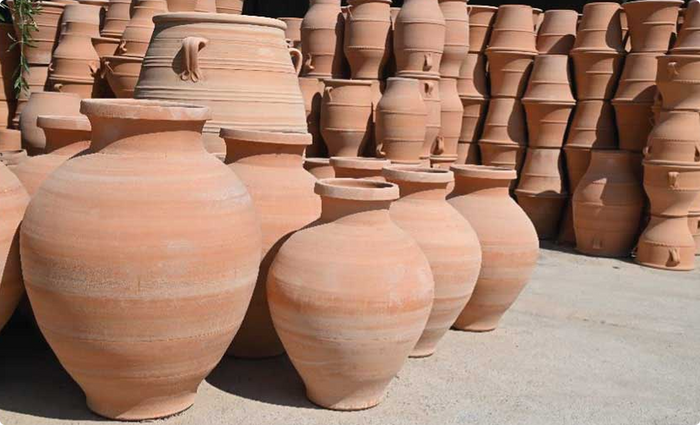
- After firing, the pots are sealed (left in tank for 24 hours), then left with their natural terracotta finish, showcasing the rich, earthy tones of the clay. The natural sealant enhances frost resistance or to create a smoother texture.

- Each pot is inspected for quality, ensuring it meets the artisan’s standards for durability, functionality, and beauty.

